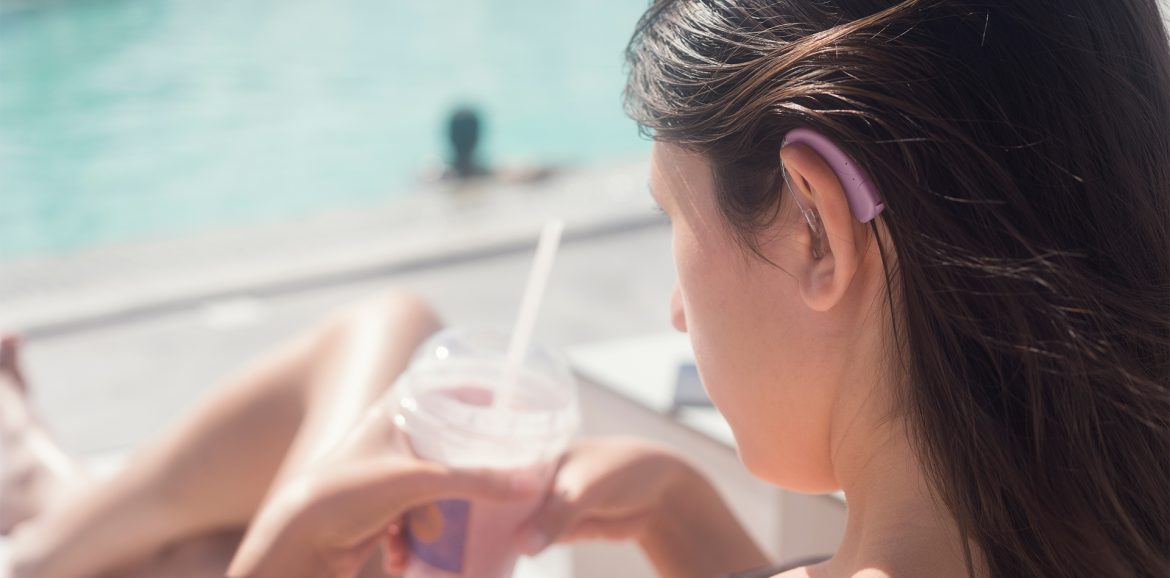IP ratings are all around us, from smartphones to hearing aids to industrial machinery. They are essential to understanding how well a device can withstand dust and water. But what exactly do these numbers mean, and how can you choose the right protection? In this blog, we’ll take you through the world of IP ratings and also discuss how important they are for hearing aids.
What are IP ratings?
IP stands for Ingress Protection and is used to indicate how well a device is protected against ingress of dust, water and other substances. This international system was developed by the International Electrotechnical Commission (IEC) and is recognized worldwide.
An IP rating always consists of two digits:
- The first digit indicates protection against solids (such as dust or dirt).
- The second digit represents protection against liquids (such as rain, water jets or immersion).
How do you read an IP rating?
Each digit has a specific meaning. The higher the number, the better the protection. This applies to both solids and liquids.
Meaning of the first digit: solids
| Figure | Protection against |
|---|---|
| 0 | No protection |
| 1 | Solid objects larger than 50 mm (e.g., hands) |
| 2 | Objects larger than 12.5 mm (e.g., fingers) |
| 3 | Objects larger than 2.5 mm (e.g., tools) |
| 4 | Objects larger than 1 mm (e.g., fine threads) |
| 5 | Dust resistant: limited dust penetration possible |
| 6 | Dustproof: full protection from dust |
Meaning of the second digit: liquids
| Figure | Protection against |
|---|---|
| 0 | No protection |
| 1 | Dripping water |
| 2 | Water drops at an angle of 15 degrees |
| 3 | Water spray to an angle of 60 degrees |
| 4 | Splash water from all sides |
| 5 | Low pressure water jets from all sides |
| 6 | Powerful water jets |
| 7 | Immersion to a depth of 1 meter for a short time |
| 8 | Long-term immersion, depending on manufacturer specifications |
| 9K | Powerful high-pressure jets, including high temperature |
Why are IP ratings important for hearing aids?
Hearing aids are exposed daily to various environmental factors, such as dust, sweat, rain or even complete immersion in water. Therefore, a good IP rating is essential to ensure that your hearing aids continue to function under challenging conditions.
Common IP ratings for hearing aids
Most modern hearing aids are rated IP67 or IP68:
- IP67: Protection against dust and temporary immersion in water up to 1 meter.
- IP68: Full dust resistance and long-term immersion possible, depending on manufacturer’s specifications.
This means your hearing aids are protected from rain showers, sweat and short periods in water, such as accidentally dropping them in the sink.
Influence of environmental factors on IP ratings.
While an IP rating says a lot about the durability of a device, there are factors that can affect its effectiveness:
- Temperature fluctuations: Extreme heat or cold can weaken seals, reducing protection.
- Wear and tear: Over time, materials such as rubber can wear out, reducing dust and water resistance.
- Chemical exposure: Contact with aggressive substances can damage seals. Consider cleaning agents or salt water.
- Physical damage: A fall can break the seals, even if the device has a high IP rating.
For hearing aids, it is therefore important to clean them regularly with appropriate products and store them in a dry environment, such as in a special drying box.
Overview table of IP classifications
Below is an overview of the most common IP classifications and their applications:
| IP code | First digit: solids | Second grade: liquids |
|---|---|---|
| IP20 | Protection against objects larger than 12.5 mm | No protection against water |
| IP44 | Protection from small objects and splash water | Suitable for outdoor use |
| IP65 | Dustproof | Protection against low-pressure water jets |
| IP67 | Dustproof | Temporary immersion in water |
| IP68 | Dustproof | Long-term immersion possible |
| IP69K | Fully dust and waterproof, including high-pressure jetting | Commonly used in industrial applications |
Tips for choosing a device with the correct IP rating
- Determine your use scenario: Will you use a device in a dusty workshop or underwater? Choose an IP rating that fits your situation.
- Check specifications: Not all IP68 devices are created equal; some can withstand deeper water than others. Always read the manual.
- Consider long-term durability: Devices with higher IP ratings often have a longer lifespan, especially if they are exposed to challenging conditions on a daily basis.
Conclusion
IP ratings help you understand how well your devices – such as hearing aids – are protected from dust and water. Whether you choose a rugged smartphone, waterproof outdoor lighting or a reliable hearing aid, a high IP rating offers peace of mind. Note, however, that environmental factors and wear and tear can affect protection.
Do you have questions about which level of protection is best for you? Let us know!






